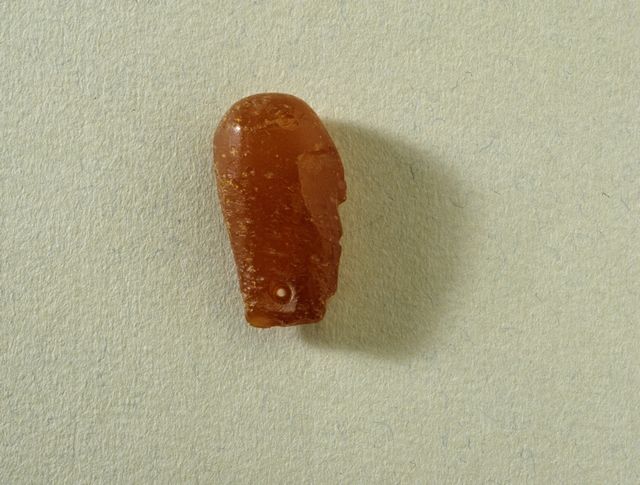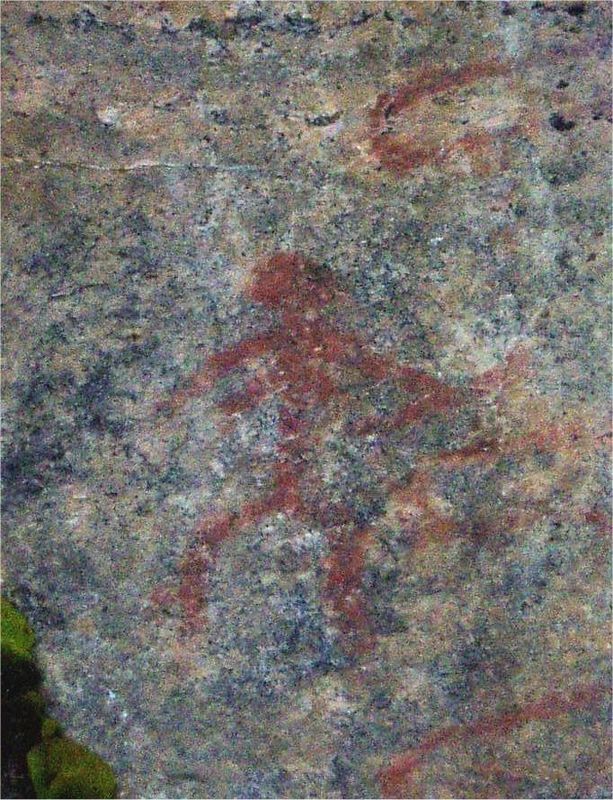Hello and welcome to this weeks Dev Diary! Today, as promised last week, I'll be explaining how Astuvansalmi relates to the last weeks title; " Amūńe, The Old One ".
Facts and Speculation
Known facts are rare, as the Finnish language, or any language on the Finnic lands, have never had written language until fairly recently. Spoken stories were the only known way that people taught their customs and culture to each other - the way of the land, one could call it, due to it's organic nature. This is also why the names of the gods have changed and split into multitudes over the millennia, hence we can only ques what was the original names of the ancient gods, that were recently called by their modern names.
Facts at the Astuvansalmi are as follows; There resides one of the oldest and largest rock painting collection in the northern Europe. It has seemingly had religious significance for many millennia, as there has been found several items from different times. Most significant ones are amber statues of a man, a woman, a boy and a bears head, which points to the sites religious meaning. The human figurines were named as following;
- Statue of the man is called "Astuvan Ukko", the "Ukko of Astuva". Ukko can mean several things, "Old Man", "Grandfather" or when talking about a god, "The Old One".
- Statue of the woman is called "Astuvan Akka", the "Akka of Astuva". Akka means "Old Woman", "Grandmother" or a feminine "Old One", when used from a goddess. Also the largest one found.
- Statue of the boy is called "Astuvan Poika", the "Poika of Astuva". Poika is a straight translation for "Boy", so there's no mystery there.
- The head of the bear is a reference to the forefathers, as bears were widely considered to be the ancestors of the locals, which has also been called "the Bear Clan".
All of the figurines had a hole through them, which indicates that the statues were actually a necklace or a pendant at one time, considered to bring good luck to it's wearer. In what aspects of life the luck was supposed to show, can only be speculated, but since there is an indication of two greater spirits or gods and their son, with a bears head, that could very well mean, that the purpose of the necklace was to bring good fortune in life in general - Abundance of sustenance, fertility and strength from the forefathers - praying for the continuity of the family or clan.

Picture of "Astuvan Ukko", photographed by Ritva Bäckman , 1990.
One of the pictures on the rock depicts a woman with a bow, who was named "Astuvan Tellervo", Tellervo being the daughter of the god of the forest Tapio. Because it is thought that women were not allowed to hunt, the depiction is considered to be divine in nature. It is also possible that the depicted woman had been considered to be the mythological and/or deified foremother of the clan.
The pictographs also depicted many pictures of moose facing west, but one was standing looking towards the east. East was considered to be the living place for the good gods, as the Sun rises from the east. Moose was one of the most sacred animals, as the Sun was considered to being a Golden Moose riding across the sky by many northern cultures at the time, some of the native peoples telling the same story even to this day.
The rock also had several paw imprints, that points to the sacred nature of the site. Some of the paw imprints were made with bear paws, which could also mean that the "Karhulaiset", or the Bear Clan had claimed the site for their own, as the bear clan had seemingly a habit to mark their territory with marking the walls with bear paws (According to the Finnish Wikipedia site). It could also be, that the Astuvansalmi was one of the holiest place in the Southern Finnish territory back in the 3000 - 1200 BCE time-period and was regularly fought over (my own speculation).
Astuvan Tellervo, by Ohto kokko.
a Son of the Gods?
Mikael Agricola, the "father of literary Finnish", who created the first written form of Finnish, wrote that according to Tavastians, Väinämöinen is said to have been the god of chants, songs and poetry. In Kalevala he is seen as an ancient hero, born from his mother, Ilmatar and fathered by water. "Väinä" literally means "stream pool", which is also very depicting of being a god of chants, songs and poetry - "the words were just flowing off of my tongue", as one of the sayings go. Also a tidbit that not many might know; Väinämöinen was one of the inspirations for Gandalf, Tom Bombadil and Ents in general, in the Lord of The Rings. It could also be, that the necklace depicted a son of the gods, which there is no certain information about. But if it did depict the son of the gods in the necklace, it could be the earliest sign of Väinämöinen or some similar deity was infact being worshiped on certain situations. This is pure speculation though, but might hold true, if more finding pointing toward this possibility are uncovered. Sadly, as the Finnish soil is rather acidic, not much survives for long periods of time, when it comes to most of the decomposing materials. The oldest fishing net found in the Finnish-Karelian region is the Antrea Net, which dates back to 8540 BCE, making it one of the oldest fishing nets in the world ever found, so there is hope yet.
The Connotations of Amūńe
Amūńe is Veps for "Ammoinen", "Muinainen", meaning "Ancient", referring in this context to the ancient gods of the Ancient Finns. Veps on the other hand is considered to be the Sanskrit of modern Finnish language, or in other words, a great grandfather of the modern Finnish language, that is considered to have the most similarities with the Late Proto-Finnic language. Thus a fitting common name to depict the old gods (the Old Ones), the oldest speculated culture and/or ancestors of the people of this larger northern Finnic region in general.
At first, I was referring to Ukko with the Amūńe, but since I made some further research last week, I learned quite much about how many different age layers there are with the Finnish gods, or any ancient mythology for that matter, as all of the ancient religions bind around the natural order of things, as they work as a way to rationalize and/or depict in metaphors how the world works or what has happened in the past - what occurrences has led the world to this moment or situation in general.
The first speculated animal representing Ukko could have well been the White-Tailed Eagle, according to Unto Salo, a 78 years old archeologist and emeritus Professor at the University of Turku. According to him, the roots of the Uralic mythological "Ukkoskotka", or "Thunder Eagle" can be traced remarkably far, or at least to 5000 BC. But it begs a question, as the Native American's has legends of the "Thunderbird", which is also depicted as an eagle. This could indicate that the "Thunder Eagle" may have been a thing even before the first Native American's crossed over to the American continent 30 000 years ago, or sometime between 30 000 and 10 000 years ago, that is estimated to have been the period when multiple waves of Native American's arrived to the American Continent. This is only my own speculation currently, as it might also just be a cultural coincidence.
After being known as the "Thunder Eagle" and before the similarities with the Greek Zeus and Roman Jupiter became apparent, Ukko was known as a God of the Hunt and Fertility - of which the fertility aspect can be seen even on the later iterations, as Ukko is later known as the God of Thunder and Rain, rain being one of the necessities for crops to grow. Akka therefore represents most likely the ground in which the crops grow, the mother nature, or equivalent to Gaia, before the more well known pantheon of gods overthrew the old gods, known as Titans in the Greek mythology.
Conclusion
This research is related to the backgrounds of the upcoming RTS title and the larger mythos behind my other planned works. This is only the tip of the iceberg thus far, as there is still much to uncover from the depths of the past. I still need to gather more material from archeological and language study findings about Finnic pre-history to have a more complete and enticing setting for the game, so stay tuned.
Thank you for tuning in, and I'll see you on the next one!
You can check out every possible mid week announcements about the project on these official channels;
• YouTube • Facebook • Twitter • Discord • Reddit • Pinterest • SoundCloud • LinkedIn •
Feature Photo; Painting by Robert Ekman in 1867 called Lemminkäinen tulisella järvellä where Lemminkäinen asks help from Ukko ylijumala with crossing the lake in fire on his route to Pohjolan häät.


.thumb.jpg.6ce651ff6c061cb5883a857112c2fd0f.jpg)
